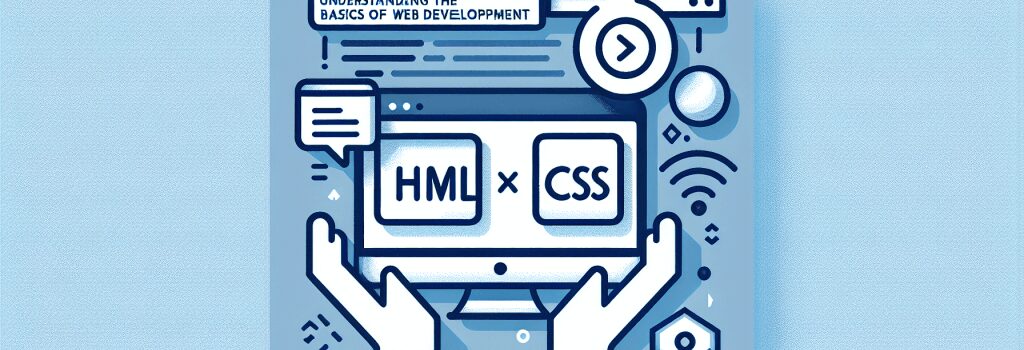Understanding the Basics of Web Development: HTML and CSS

—Introduction
Welcome to the world of web development! As the digital age continues to evolve, the demand for skilled web developers has never been higher. This chapter serves as your gateway into the realm of web development, focusing on the cornerstone technologies every web developer must master: HTML and CSS. These two languages form the backbone of the web, allowing developers to create structured, visually appealing websites. Let’s dive in and explore the basics of these fundamental web technologies.
HTML: The Foundation of the Web
What is HTML?
HTML, or HyperText Markup Language, is the standard markup language used to create and design web pages. It provides the basic structure of websites by using a variety of tags and attributes. Think of HTML as the skeleton of a website—it outlines the structure but does not deal with the aesthetics.
Key Elements of HTML
HTML documents are comprised of elements. These elements are defined by tags, written using angle brackets. Tags often come in pairs, including an opening tag and a closing tag. HTML tags can define headings, paragraphs, links, images, and more.
Here are a few essential HTML tags:
– ;<html>>: The root element that encloses the entire HTML document.
– ;<head>>: Contains meta-information about the document, like its title and links to stylesheets.
– ;<body>>: Houses the visible content of the web page, such as text, images, and links.
Creating Your First HTML Page
Creating your first HTML page is a straightforward process. Open a simple text editor, like Notepad or TextEdit, and start by typing the basic structure of an HTML document:
This is a paragraph on my first web page!
</body> </html>Save the file with a .html extension, and you’ve created your first web page!
CSS: Styling the Web
What is CSS?
While HTML structures the web, CSS (Cascading Style Sheets) styles it. CSS controls the layout, color, font, and overall visual appearance of web pages. If HTML is the skeleton, think of CSS as the clothing; it makes everything look nice.
Understanding Selectors, Properties, and Values
CSS works by selecting HTML elements and applying styles to them. Styles are defined by a combination of properties and values. For example, you can change the color of all ;<h1>> tags by specifying a color property and a value:
Incorporating CSS into HTML
There are several ways to include CSS in your HTML documents:
– Inline styles: Adding the style attribute directly to HTML elements.
– Internal styles: Placing a ;<style>> tag within the ;<head>> section of the HTML document.
– External stylesheets: Linking to an external CSS file using the ;<link>> tag. This method is preferred for larger projects, as it keeps styles separate from the HTML structure.
Your First Styled Page
Enhance your first HTML page by adding some simple CSS. Create an external stylesheet named ;style.css>:
Link this stylesheet to your HTML document within the ;<head>> section:
Congratulations, you’ve taken your first steps into web development with HTML and CSS! These foundational tools give you the power to create structured, stylish websites. As you continue your journey, remember that practice is key to mastering web development. Experiment with different elements, styles, and layouts to discover the vast possibilities HTML and CSS have to offer.
—This chapter commenced your exploration into web development, focusing on the indispensable skills of HTML and CSS. As we progress, we’ll delve into more advanced topics and technologies, equipping you with everything you need to become a proficient web developer. Stay curious, practice diligently, and watch as your web development skills flourish.


